
GENERAL PRACTICES
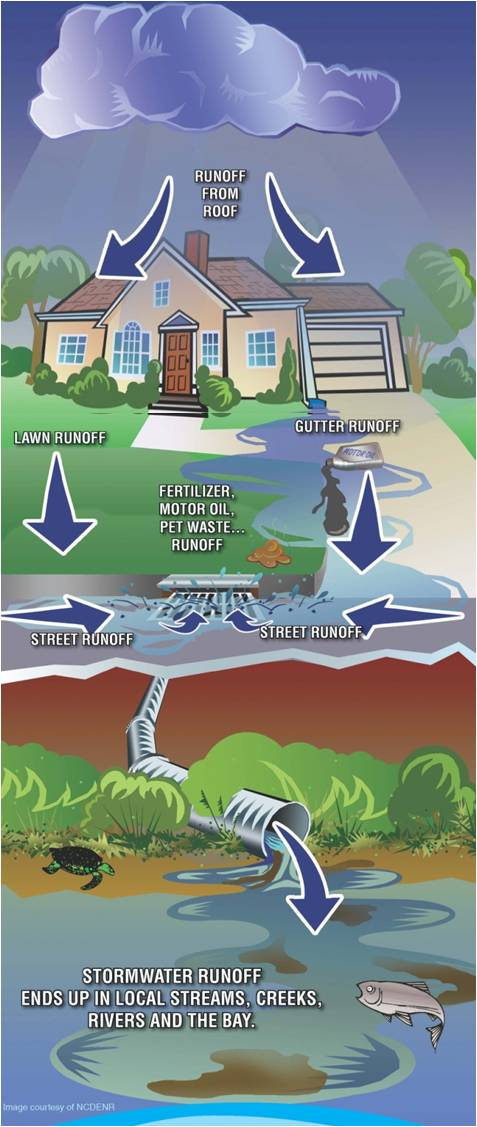 What can we do about stormwater runoff?
What can we do about stormwater runoff?
Every individual can improve stormwater quality from placing trash, recycling and pet waste in designated receptacles to applying pesticides and fertilizers according to safe handling instructions and fixing automotive leaks. The NRDC provides several simple steps every individual can do in their daily lives.
Individuals can also report “muddy waters” and sources of sediment pollution using the Muddy Water Watch app, which can be downloaded for free from Apple iTunes or the Google Play stores. Once installed on a smartphone or tablet, a user can easily snap a photo of the pollution source, provide notes and submit a report. The report is geotagged so that it goes to the appropriate authority.
Homeowners and businesses can implement a wide-variety of stormwater control measures (SCMs - also referred to as green stormwater infrastructure, best management practices and low impact development) in their landscapes that provide multiple benefits in addition to controlling stormwater runoff.
Pictured Right: Stormwater management begins with you. Source: NCDENR (now NCDEQ).
Reduce
There are many SCMs that reduce the amount of stormwater runoff on-site before it becomes a problem for our waterbodies and communities.
Bioretention Systems: Rain Gardens, Bioswales, Filtration Strips
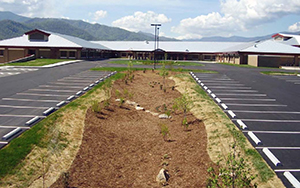 All of these are types of SCMs that help infiltrate and filter stormwater runoff on-site. They are typically shallow depressions filled with sandy soil, mulch and planted with dense vegetation in areas. They are designed to drain within 24-48 hours.
All of these are types of SCMs that help infiltrate and filter stormwater runoff on-site. They are typically shallow depressions filled with sandy soil, mulch and planted with dense vegetation in areas. They are designed to drain within 24-48 hours.
One of several bioretention systems at Bethel Elementary School in Bethel, NC that prevents runoff from entering the tributaries of the Upper Pigeon River Watershed, home to several sensitive, threatened or endangered aquatic species.
Source: Haywood Waterways Association, Innovative Stormwater Controls Case Study: Bethel Elementary School.
Steep Slope Designs
Steep slopes pose challenges for retaining stormwater. Special bioretention systems can be designed to create a cascade effect and prevent high-speed flows, erosion and flooding downstream. For more gradual slopes, on-contour swales can be dug along level contour lines to capture stormwater and allow it to infiltrate to provide water for plants in the soil berms.
A stormwater diversion hump, also called a water bar, can be used on impervious surfaces to intercept and divert water to vegetated swales.
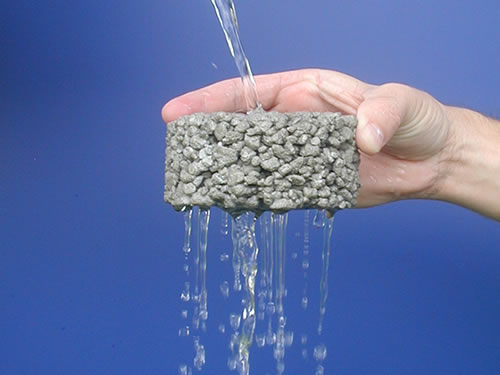
Permeable Pavement and Pavers, Porous Concrete
Permeable technologies allow stormwater to percolate through the paved surface and to minimize runoff.
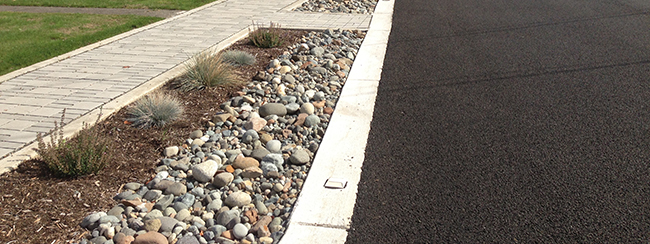
Example of a permeable paver walkway and filter strip to control stormwater flooding in a residential neighborhood in Puyallup, WA.
Stormwater Wetlands
Stormwater wetlands are constructed wetlands that incorporate wetland plants in a shallow pool, and are usually installed in areas with wet soils. As stormwater runoff flows through the wetland, pollutants settle to the bottom and are absorbed by the plants. Stormwater wetlands are among the most effective stormwater BMPs in terms of pollutant removal. They also provide a habitat type that is less common in our mountain region.
An alternative, when standing water in not desired, are subsurface gravel wetlands. Instead of a permanent shallow water surface, the water level is below a layer of crushed rock. Because there is a permanent water level, this BMP can also support wetland plants. Pollutant removal takes place as stormwater flows through the root zone.
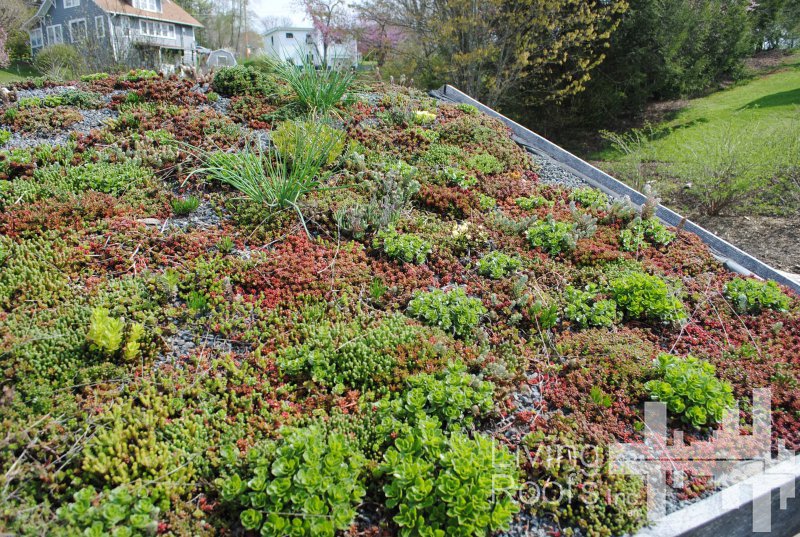 Green Roofs
Green Roofs
Green roofs consist of several layers, including a waterproof membrane, a root barrier and a lightweight growing media. Green roofs can be “intensive” or “extensive”. Intensive green roofs, also called rooftop gardens, have a deeper planting medium and can support all sizes and types of plants, even trees. They usually incorporate paths and furniture, and are used on large commercial buildings to provide an amenity to its occupants.
Extensive green roofs are more common on small structures and homes, where people do not typically access the roof except for maintenance. The planting medium is shallow and supports drought-tolerant sedums and grasses. Extensive roofs are much lighter than intensive roofs and can be added to existing structures. Green roofs can last 30 years or more, and also help reduce heating and cooling costs, improve air quality and aesthetics.
Photo Above: Extensive roof at the Mars Hill Stormwater Demonstration Project, designed and installed by Living Roof, Inc. Source: Living Roofs, Inc.
Reuse
Stormwater can also be captured to reduce potable water consumption for irrigation, building cooling, and toilet flushing.
Rain Barrels
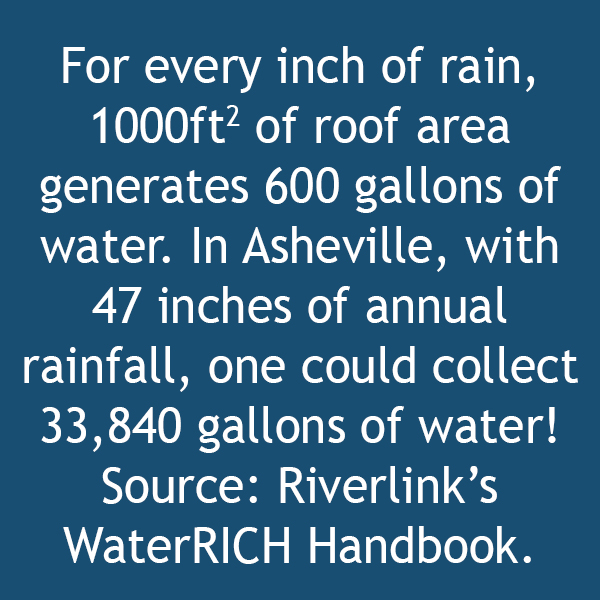 Rain barrels, typically 55-60 gallons, are used for homes and are connected to the rain gutter downspout. Stored water can be gravity fed to landscaping, which can otherwise make up over 50% of a homeowners potable water use on an annual basis.
Rain barrels, typically 55-60 gallons, are used for homes and are connected to the rain gutter downspout. Stored water can be gravity fed to landscaping, which can otherwise make up over 50% of a homeowners potable water use on an annual basis.
Cisterns
Cisterns serve a similar function but can hold several thousands of gallons of water. More complex systems can be designed to filter and pump water indoors for non-potable uses.
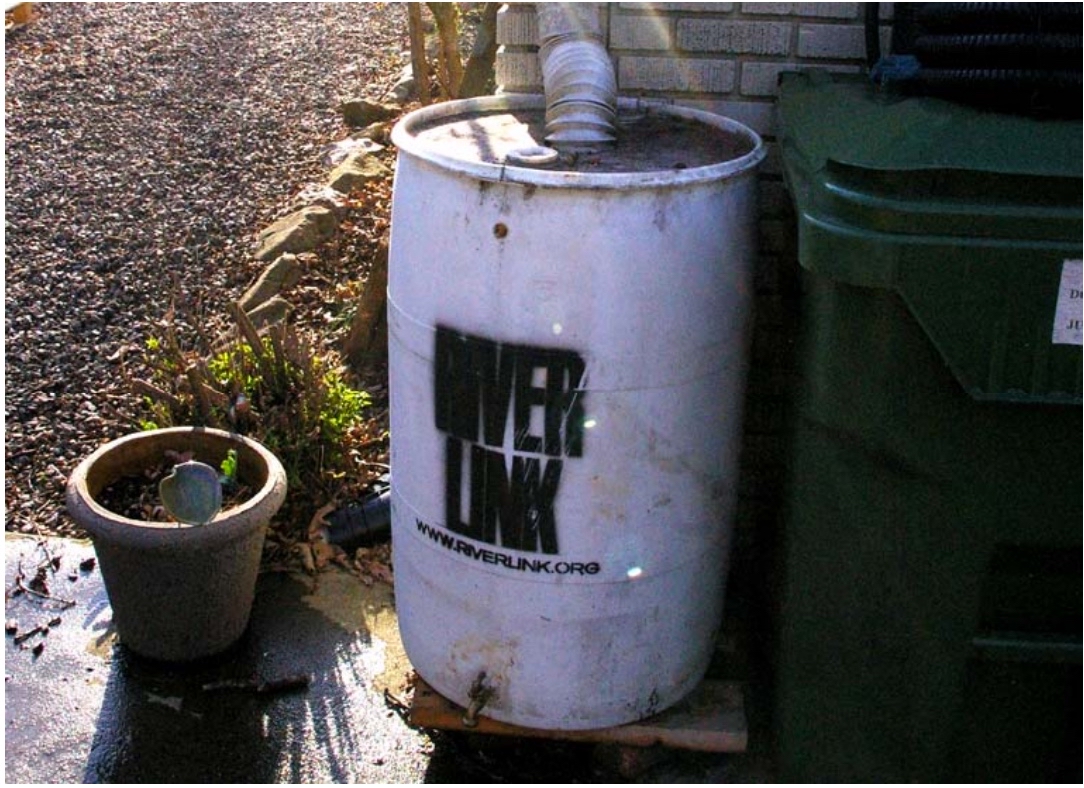
Many hardware stores and gardening centers sell rain barrels, or you can make your own like the one pictured here. See Riverlink’s WaterRICH Handbook for detailed instructions.
Reference:
Mars Hill Stormwater Demonstration Project, HydroCycle Engineering. Download the Mars Hill Trail Map and Steep Slope Bioretention Project pdfs for more information